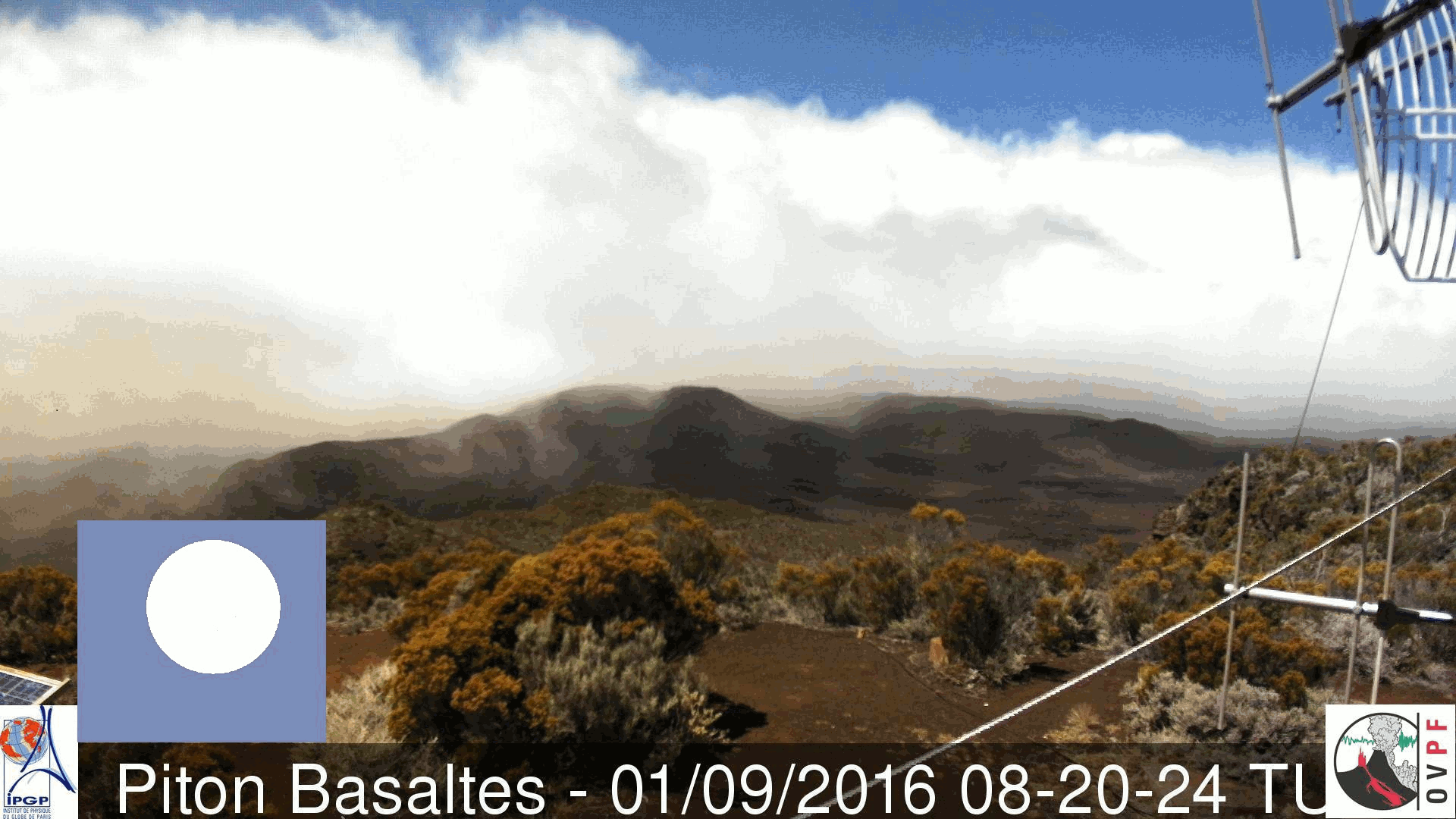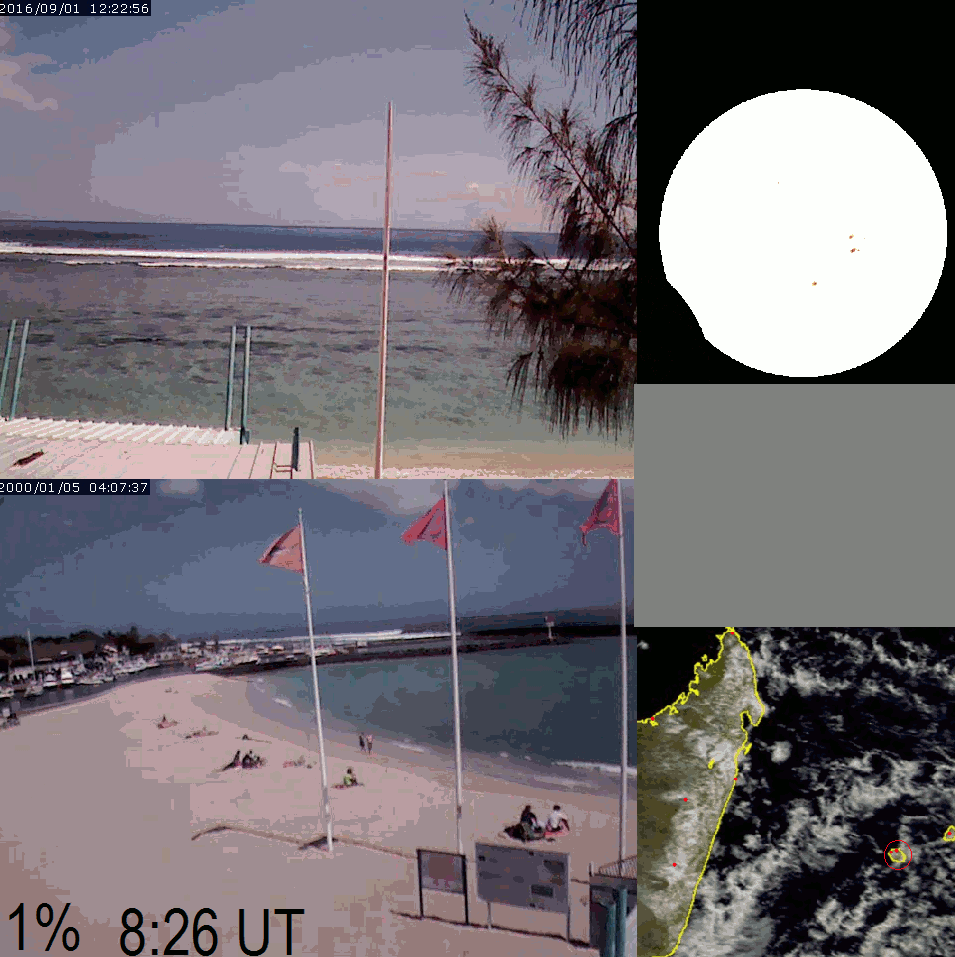African “Ring of fire” on the live stream and web cameras
One week ago African dwellers experienced the annular solar eclipse, which occurred throughout Central Africa, Madagascar, and the Reunion. A spectacular “ring of fire” solar eclipse darkened skies over Africa from early morning to early afternoon. The annular solar eclipse occurs when the Moon’s apparent diameter is smaller than the Sun’s, blocking most of the Sun’s light and causing the Sun to look like a ring. An African annular eclipse appeared as a partial eclipse over nearly the whole of Africa, Yemen, and the Indian Ocean. The maximum phase of annularity occurred above Tanzania (Phase 0,987, Obscuration 94,8%, Duration 3m05s) (Pic.1)

Pic.1 Annular solar eclipse on the 1st September 2016 path (eclipse.gscf.nasa.gov).
I decided to carry out this observation without a journey to Africa (unfortunately) by using the live-stream view and web cameras located in the vicinity of maximum phenomena. Unfortunately, Central Africa isn’t a good region to find proper and good working web cameras. The countries are poor and later with modern technology. I couldn’t find web cameras in Gabon, Congo, and Tanzania. Probably I didn’t spend enough time to do this but never mind.
Hopefully, I found good web cameras in the Reunion and north Madagascar (Andilana, Nosy Be island). Finally, I could observe a huge partial eclipse (84%( from Andilana Beach and the annular solar eclipse from the Reunion (Pic.2).

Pic. 2 Web cameras location: 1 – Andilana Beach resort, 2 – Saint-Denis, 3 – south Reunion beaches and path of annularity (eclipse.gfsc.nasa.gov).
Watch the eclipse!
To watch this phenomenon through the live stream I used:
– Sat24.com website, which shows exactly what’s going on above Africa (Pic.3,4,5,6),
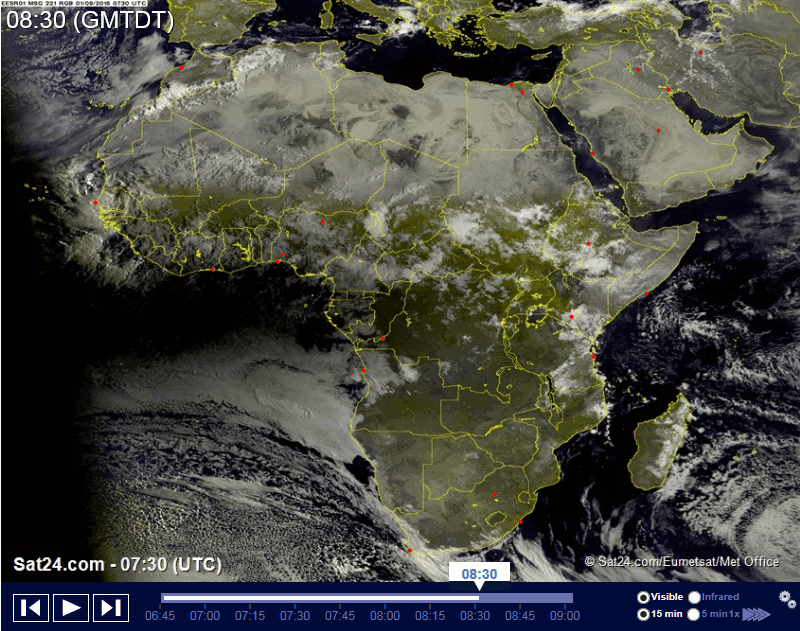
Pic. 3 The annular solar eclipse going across Africa (sat24.com).

Pic. 4 The annular solar eclipse above Congo (sat24.com).
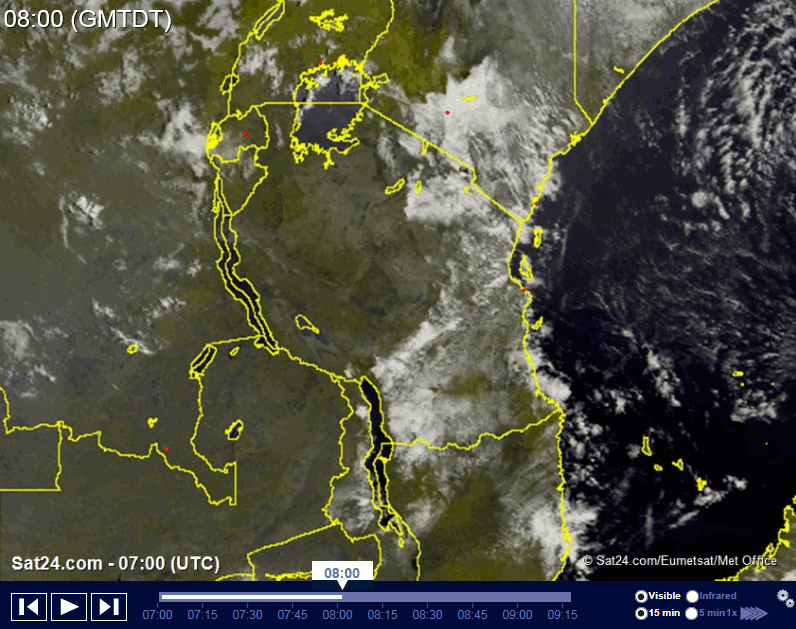
Pic. 5 The annular solar eclipse above Tanzania (sat24.com).

Pic. 6 African “Ring of fire” above Madagascar (sat24.com).
– Live stream from Reunion and other various places within the path of the eclipse (Pic.7,8), which in general show the annular solar eclipse from Reunion,
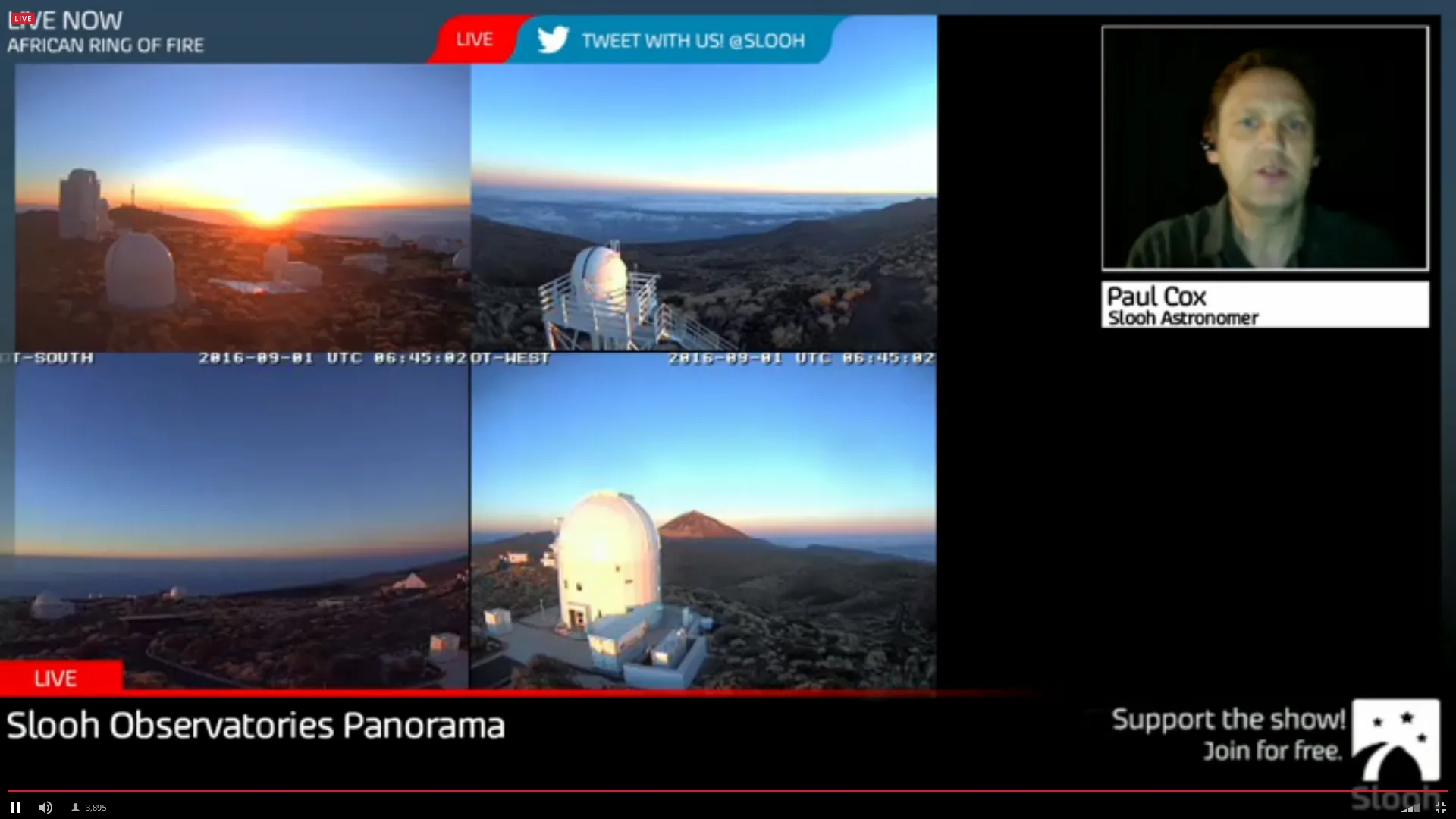
Pic. 7 Live stream from the Teide Observatory (6:45 UT), where hardly visible partial eclipse (Obscuration 2%) occurred just after sunrise (live.slooh.com)

Pic. 10 2nd and 3rd contact on the Reunion Island (live.slooh.com).
– ISS Position, which makes live streams (Pic 8,9,10), unfortunately, this part of the observation failed because the cameras were temporarily broken. The image from ISS was regained at the very last moment of the eclipse when antumbra touched Earth’s terminator line on the east part of the Indian Ocean. During the morning the ISS track wasn’t suitable for the path of the eclipse, the satellite was going from South America towards Europe and text into Australia.

Pic. 13 ISS tracking in the vicinity of the annular eclipse path, with the live stream output on the right (n2yo.com).
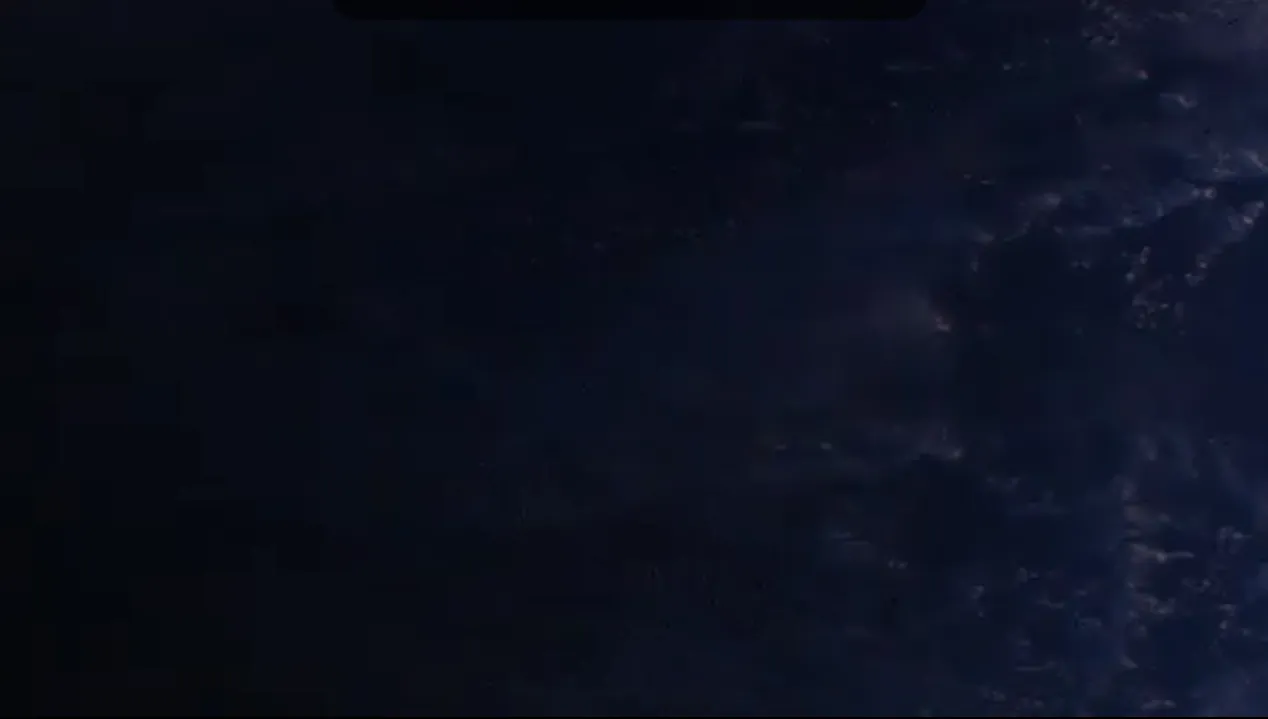
Pic. 14 Full-screen modes of the ISS live stream just after regaining the image. The image is showing another way round. Annular eclipsed sun setting on the cloud level (n2yo.com).
I watched this phenomenon through web cameras also from:
-> Madagascar, Nossi-be, Andilana Beach resort (Pic.15,16,17,18).

Pic. 15 Web camera on Andilana Beach resort, Madagascar (andilanaresort.com)
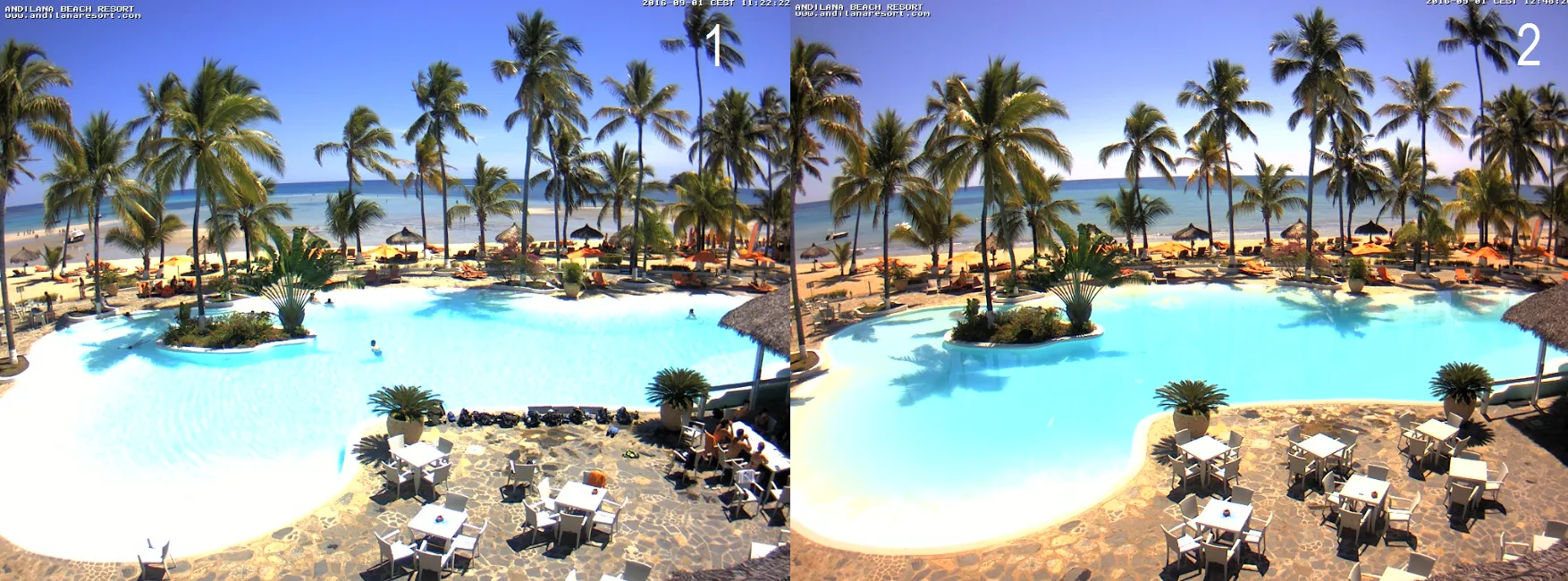
Pic. 16 Andilana Beach resort: 1 – at the beginning of the partial eclipse, 2 – during the maximum phase (andilanaresort.com)
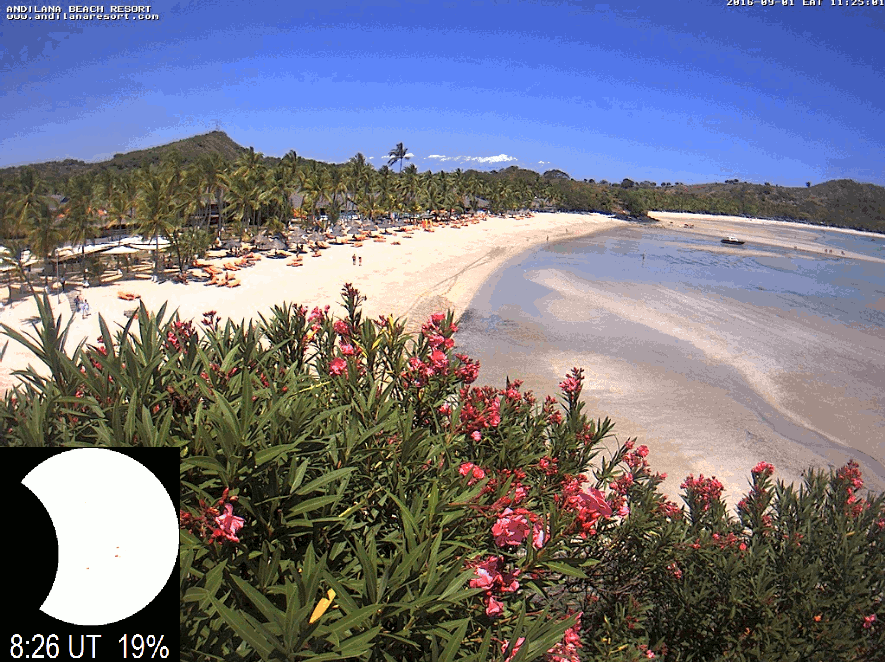
Pic. 17 A partial solar eclipse is seen from Andilana Beach (andilanaresort.com).

Pic. 18 Andilana Beach: 1 – at the beginning of the partial eclipse, 2 – ? 9 minutes after the maximum phase! Look at the stunning sand (andilanaresort.com).
-> The Reunion Island:
a) Saint-Denis – there wasn’t an annular phase. The capital of the Reunion was in a grazing zone and for nearly 2 minutes people could observe how the lunar mountains are touching the solar limb. (Pic.19,20),

Pic. 19 Almost annular solar eclipse in Saint-Denis (cycloneoi.com)

Pic. 20 Saint-Denis: left – at the beginning of the eclipse, right – during the maximum phase, look at the houses! (cycloneoi.com).
b) Piton Basalte – good camera provided sky color change (Pic.21.22),

Pic. 22 Light sensitivity changes on the web camera close to Piton Basaltes: left – before the solar eclipse right – 15 mins after the annularity, watch on the sky and ground (cycloneoi.com).
c) South Reunion beaches – small cameras with some defects (Pic. 23,24),

Pic. 25 South Reunion beaches during the annularity. Some people were very interested in (cycloneoi.com, sat24.com).
d) Saint-Leu HD Camera – the phenomenon was good noticeable (Pic.26).

Pic. 26 The annular eclipse on Saint-Leu: 1 – after starting the phenomena, 2 – just before the annularity (vievsurf.com)
Conclusions
In conclusion, I can say that working with web cameras is much different than working with digital cameras when you can set your photo parameters manually. Then regardless of the light sensitivity, you can catch any change of light stream, which you meanwhile obtain. Web cameras are used to change this parameter automatically, hence some sky-darkening is barely visible. Once you want to see some picture differences you must refer to the brightest elements visible in your picture (Pic.18,20). Basically, it’s good to compare a bounced light from sand or some bright buildings. In some animations and attached photos, you can notice examples that appeared during this event.
Another issue arising out of the automatic light sensitivity changes is the asymmetry of light dissipation between the time before and after the maximum phase. As usual, images taken after the maximum phase are brighter. In my opinion, this is the reason for the late camera reaction to light stream change. The best example of this lateness you can see is in Andilana Beach (Pic.15,17,18) when the sky is the darkest and red a couple minutes after the maximum phase. Eventually, the color of this sky didn’t back to the drawing board despite the sun’s height above the horizon.
Cameras HD is the best to observe and analyze solar eclipse phenomena.
It’s good to check what people are doing during the solar eclipse when they are visible in the picture. Some of them are very interested in this phenomenon.
Advises:
In general, I would highly recommend making a solar eclipse observation in this way. It’s good to go to the right place where the event is going by, but in the case when you can’t find the right moment to make a trip you can make a real observation from your home!
You need a computer and a good connection only. I would very much like to give to you some advice about web cameras:
– direction, where the camera is headed for – very important to delimit the most important parts of the phenomena. Every camera is headed horizontally, so when the eclipse occurs during the morning or evening you may be able to see the Sun,
– time of refresh – some cameras are refreshed every 10, or 15 minutes (even more rarely), and another is able to stream live all the time. The camera update is decisive in catching the most important moments of the solar eclipse,
– the camera resolution – except the HD cameras, which are obviously better there are cameras with quite big resolution e.g. 640×480 (VGA), where you can see a lot of details from the captured area.
– people interested in it – watch what people are doing during the phenomena! It may be interesting,
– Hyper Snap or familiar software – it’s essential to have it when you decided to toggle to full-screen mode. You can use PrtSc (Print Screen) button and capture the camera view into Paint but Hyper Snap will help you to make a photo series,
I hope that we will have many more HD cameras located around the world in the future.
For support, I used Stellarium ver.0.14.0 (www.stellarium.org)
Mariusz Krukar
Links:
Annular Solar Eclipse 1.09.2016 on NASA website
Watch the annular eclipse on the Reunion Island
Annular Solar Eclipse 2016 circumstances (Madagascar, Reunion)



